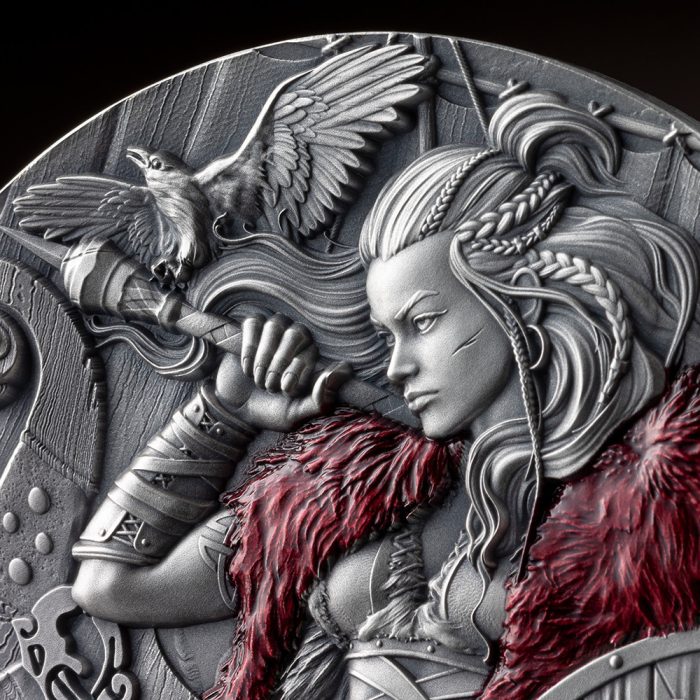-
Freydis Eiríksdóttir: Viking Heroine, Ruthless Killer, or Medieval Invention?
In the sparse historical record of Norse exploration of North America, one woman stands out—not for clarity, but for controversy. Freydis Eiríksdóttir, daughter of Erik the Red and sister to legendary explorer Leif Erikson, appears in two 13th-century Icelandic sagas with wildly contradictory portrayals. Was she a fearless pregnant warrior who saved her people from annihilation? Or a manipulative murderer who massacred defenseless women with an axe? The answer reveals more about medieval storytelling than historical truth.
A Family Legacy of Violence and Discovery
Freydis came from Viking royalty—the kind built on blood and ambition. Her father, Erik the Red, was exiled from both Norway and Iceland for manslaughter before founding the first Norse settlements in Greenland around 985 CE. Her brother Leif became the first known European to reach North America around 1000 CE. Another brother, Thorvald, died in violent conflict with Indigenous peoples during his own expedition to the new land.
Exploration was the family business, and violence was part of the operational model.
Two Sagas, Two Completely Different Women
In Eirik the Red’s Saga: The Heroine
Freydis appears in a single, dramatic scene. Eight months pregnant, she joins an expedition to Vinland (North America) led by Thorfinn Karlsefni. When Indigenous warriors attack with unfamiliar weapons, the Norse men panic and flee—including their leader.
Left behind and defenseless, Freydis doesn’t surrender. She grabs a fallen warrior’s sword, frees one of her breasts from her clothing, and slaps the blade against it. This shocking, primal display of defiance terrifies the attackers, who retreat in confusion. The saga presents her as a hero whose courage succeeded where conventional masculine warfare had utterly failed.
In The Saga of the Greenlanders: The Villainess
This version paints Freydis as a monster. She co-leads a profit-sharing expedition to Vinland with two Icelandic brothers but immediately begins scheming. She secretly brings extra men, forcibly evicts the brothers from existing shelters, and after a winter of tension, executes her endgame.
She falsely claims the brothers assaulted her, manipulating her husband Thorvard into launching a nighttime raid. His men capture and kill all the men in the brothers’ camp—but refuse to kill five women. Freydis’s response? “Hand me an axe.” She personally butchers all five women herself, an act the saga describes as having “no parallel in Old Norse texts.”
She then threatens her crew into silence, steals the brothers’ ship and goods, and returns to Greenland with a cover story. When the truth eventually emerges, even her brother Leif—though horrified—can’t bring himself to punish her directly.
Why the Contradiction?
These aren’t competing historical accounts—they’re competing narratives written 200+ years after the events they describe, by Christian authors looking back at their pagan past. Scholars suggest several explanations:
Christian Propaganda: Freydis’s name connects her to the pagan goddess Freyja. Her villainous portrayal may represent everything Christian authors saw as wrong with heathenism—greed, treachery, ungodly violence. Her story becomes a cautionary tale: this is what happens when you reject Christian virtue.
Literary Foil: The sagas also feature Gudrid Thorbjarnardóttir, the ideal Christian woman—pious, wise, virtuous. Gudrid’s descendants included influential Icelandic bishops, likely patrons of the monasteries where these sagas were written. Freydis may have been crafted (or exaggerated) as Gudrid’s dark opposite, reinforcing her goodness by contrast.
The Problem of Powerful Women: A woman who led expeditions, commanded men, and wielded deadly violence was deeply transgressive. Medieval authors could only process her in extremes—either as a miraculous exception to gender norms (heroine) or a monstrous violation of them (villainess).
The lack of any independent evidence for Freydis’s existence strengthens the case that she’s primarily a literary creation rather than a historical figure.
Modern Resurrections
Contemporary authors and filmmakers have embraced Freydis’s ambiguity, reshaping her story through modern lenses:
- Historical novels like Tamara Goranson’s The Voyage of Freydis (2021) reframe her villainy as survival, depicting her as a victim of domestic abuse seeking freedom rather than a greedy killer.
- Netflix’s Vikings: Valhalla creates an almost entirely new character—a fierce pagan warrior seeking revenge against a Christian Viking who assaulted her, positioned as a “guardian of faith” against encroaching Christianity.
These adaptations use her name and reputation for ferocity to explore distinctly 21st-century themes: trauma, female empowerment, religious conflict, and patriarchal oppression.
The Real Legacy
The quest to find the “real” Freydis is futile. What we have instead is a character of remarkable literary power—someone whose very contradictions make her timelessly compelling. She embodies the best and worst of the Viking spirit, the disruptive potential of female power, and the anxiety cultures feel when women refuse to stay in their prescribed roles.
Whether she was a real woman whose story was dramatically altered, or a complete invention designed to serve narrative purposes, Freydis Eiríksdóttir remains what she’s always been: a mirror reflecting the values, fears, and conversations of whoever tells her story. In the 13th century, she was a vessel for debating paganism versus Christianity. In the 21st, she’s a vehicle for exploring trauma and gender equality.
Her true legacy isn’t historical fact—it’s literary possibility. And that may be the most Viking thing about her.
Wah
Hi, this is a comment. To get started with moderating, editing, and deleting comments, please visit the Comments screen in…


Haw